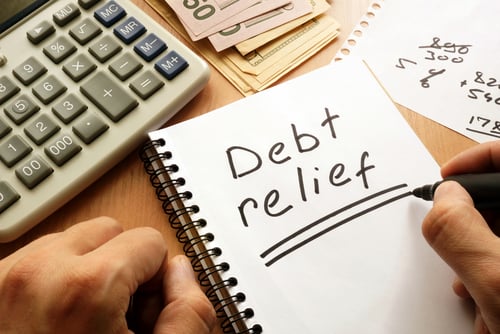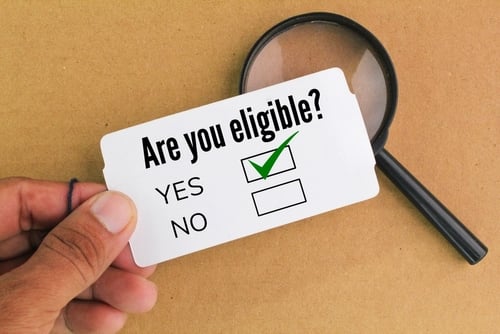Business Debt Help
Just as no individual wakes up one day and consciously decides that it would be a good idea to get buried up to his or her eyeballs in debt, no small business owner wishes a similar fate for his or her business.
However, as the saying goes – the road to hell is paved with good intentions – and even though many small business owners take on debt with the full intent of growing their business, creating jobs, enhancing incomes and building their own net worth, the story doesn’t always have a happy ending.
Sometimes business owners get into trouble with debt too, and find themselves in the position of staring down the possibility of losing their business and their dreams. However, when times get tough with mounting business debt, there are steps that a business owner can take to help remedy matters. Let’s take a closer look.

Managing Small Business Debt
Here’s a sobering set of statistics: Approximately 20% of new small businesses fail after their first year, 30% within two years, and half of all new small businesses fail within five years of their launch.
For many of these failed small businesses, the primary culprit is taking on too much debt at the wrong time – and often at unfavorable terms. There’s little question that taking on the right amount of the right kind of debt at the right time can spell the difference between success and failure – but far too many business owners get overzealous with debt in their pursuit of growth and expansion.
When cash flow gets tight and creditors come knocking, the choice for a heavily indebted business owner becomes binary – either find a way to save the business while managing debt payments and all other expenses, or devise the least financially painful exit strategy and allow the business to fail.
ABC
Keep The Business Alive
Saving a sinking ship of a business isn’t easy, so the first option of investing additional personal or family capital should only be undertaken after careful financial analysis reveals a high probability that doing so will lead to a favorable long-term result.
The key word here is “long-term,” however, as it’s easy to get seduced by the obvious favorable short-term result of a cash infusion. For things to really work out in the long run though, it will likely be necessary to undertake additional steps.
Raising funds through the sale of surplus equipment and scrap, leasing out excess office space, and streamlining costly phone systems are possible incremental improvements that can help. Contacting suppliers to arrange for deferred payment plans and any discounts that can aid in improving cash flow is another step that can be undertaken. Reducing headcount is also an ever-present, yet unpleasant option.
Business Debt Consolidation
When a business owner faces multiple high-interest monthly debt payments from a number of different creditors, things can get messy. Not only is it inconvenient to keep track of various payment schedules to ensure proper timely payments, the avoidance of late fees and damage to a credit score and profile, but it also can be far more expensive than making payments to one single creditor.
A business debt consolidation loan taken out at a lower blended APR (after assessing all fees, including pre-penalty fees on existing debts) than the blended APR of the existing debt scenario can aid in strengthening monthly cash flow by reducing the monthly debt service payment while also streamlining the repayment process. You can learn more about business debt consolidation loans here on our website.


Manage Your Creditors
You should also contact each creditor, advising them of your difficult situation and ask about finding a hardship solution that could involve lowering the interest rate or altering repayment terms.
Let them know that the easier they can make things on you, the faster that you will re-pay them. Though it may be possible to get a credit line increase from one of your creditors, this should only be pursued after careful consideration reveals that any additional debt undertaken would lead to a favorable long-term outcome.
Again, it’s important not to get seduced by any obvious short-term benefit that access to additional capital would provide. You can also consider the process of business debt settlement, through which a reputable debt relief firm can negotiate with your creditors to settle debts for less than what is owed.
Contact the experienced debt relief specialists at United Settlement to discuss the business debt relief options that best suit you and your business’ specific financial situation.
When the Business Fails
As the statistics at the top of the page show, small businesses commonly fail. When things truly become dire, the trick is to minimize pain and come up with an exit strategy that makes failure as acceptable as possible.
If the business’ debts are less than its assets, it may be possible to find a buyer. Funds raised from a sale allow for the repayment of creditors and the elimination of future obligations.
However, if debts exceed assets, then liquidation of individual assets followed by a subsequent distribution of funds to lenders who will accept less than the balance, comes next. In this scenario, when it is clear that the business is not surviving, creditors will often accept a reduced payment because the alternatives – litigation and possibly bankruptcy – would likely yield even lower payouts for them.


Chapter 7 Business Bankruptcy
Finally, a Chapter 7 Business Bankruptcy, through which the business is turned over to a bankruptcy trustee who then sells all remaining assets and fully pursues accounts receivable collection, is an option of last resort.
The bankruptcy trustee raises as much money as possible before paying any remaining taxes and distributing funds to creditors. Since personally guaranteed business debts can remain an issue following a small business failure, pursuing a Chapter 7 Personal Bankruptcy can also make sense, as this can eliminate these debts, as well.
However, the long-term consequences of bankruptcy to a credit score and profile are significant, as FICO credit scores are susceptible to drops of 200 points or more and the stain of bankruptcy remains on a credit report for up to ten years.
Are you in debt? we can help
Get Debt Relief
Speak with licensed debt specialists dedicated to guiding you toward financial stability every step of the way.

Ready To Get Started?
See if you qualify for debt relief. Get a Free savings estimate to see how quickly you can be debt free.
Embrace financial freedom with our tailored solutions, expert guidance, and unwavering commitment to your success.
Experienced Professionals
Our experienced team has helped thousands of clients successfully eliminate debt and regain financial freedom.
Customized Solutions
We know every financial situation is different, so we design personalized debt relief plans to fit your specific needs and goals.
High Success Rate
Our proven debt relief strategies deliver real results. With a strong track record of success, we help clients achieve lasting financial stability.
Confidential Consultation
Your privacy is our priority. All debt relief consultations are 100% confidential and handled with the highest level of discretion.
Explore other blogs











